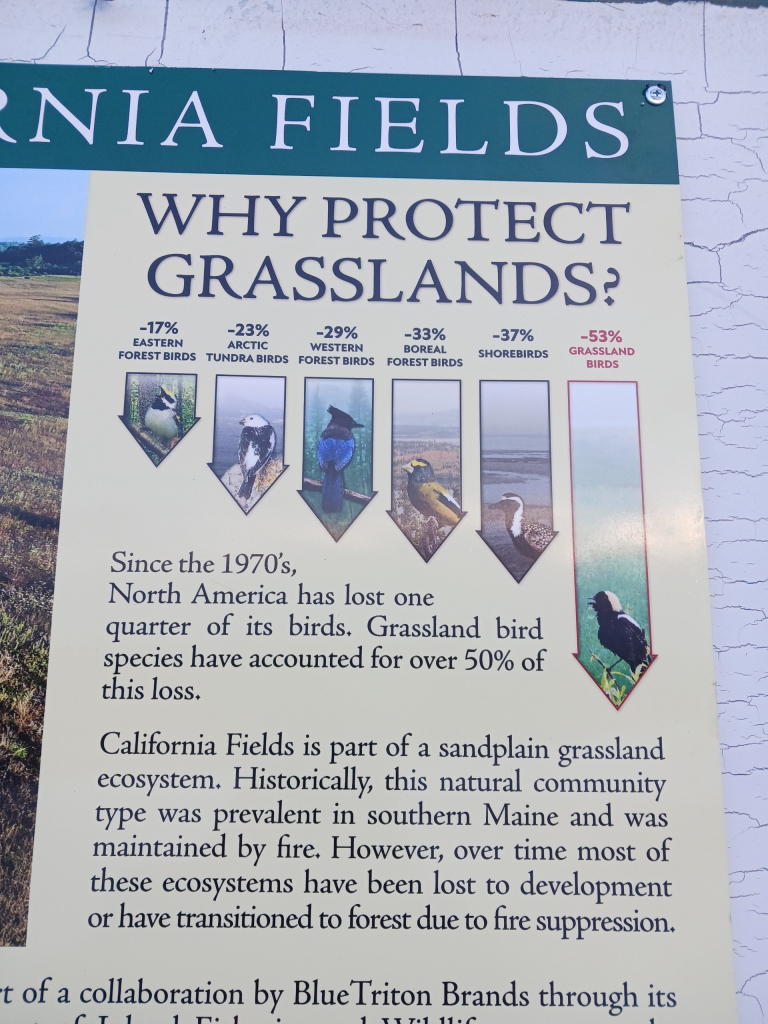Suche
Beiträge, die mit bobolink getaggt sind
Speaking of #Rewilding, some new signs went up at nearby #CaliforniaFields in Southern #Maine! Looks like the #MaineDepartmentOfInlandFisheries finally acknowledged that there are some #EndangeredSpecies there, and put the pressure on #BlueTriton / #PolandSprings / #BigWater -- who had planted a bunch of pine trees in the field (to hide the drilled wells that they claim are "springs"). But now they have to take them down and restore the grasslands! (And it's full of #Milkweed which the #MonarchButterflies love!)
#GrasshopperSparrow #UplandSandpiper #NorthernHarrier, #HornedLark, #Kestrel, #Meadowlark, #Bobolink
#GrasshopperSparrow #UplandSandpiper #NorthernHarrier, #HornedLark, #Kestrel, #Meadowlark, #Bobolink


